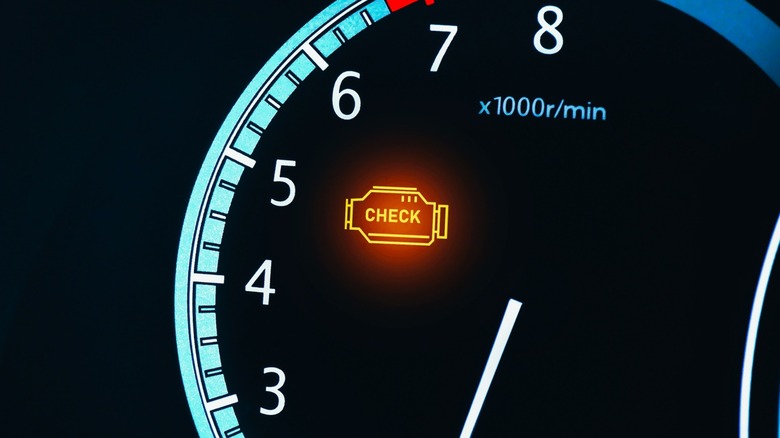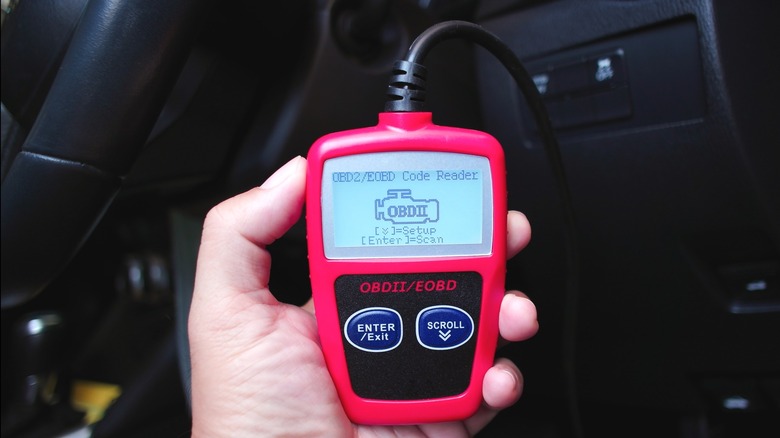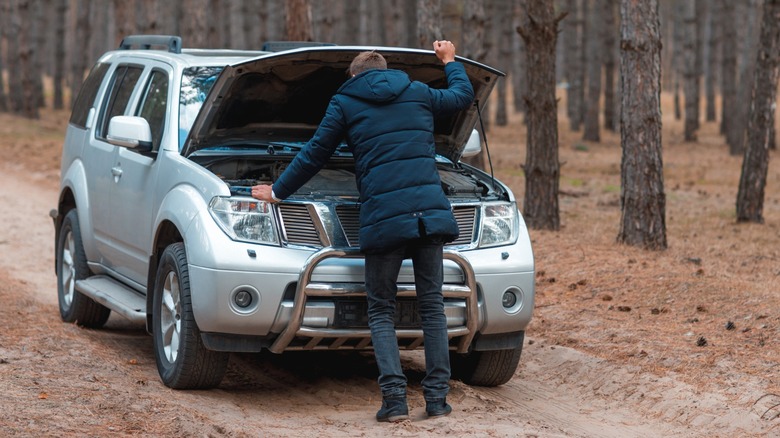Should You Drive Your Car If The Check Engine Light Is Flashing?
You're driving along in peace when suddenly the dashboard lights up with a flashing Check Engine light. Can you ignore it and drive as usual until the next oil change? No — a flashing light indicates greater urgency than a steady light. A steady (or amber or yellow-colored, if your indicator uses more than one color) Check Engine light typically warns of a lesser evil, such as a gas cap that wasn't screwed on tightly, or a faulty sensor.
A blinking engine light (or one that is orange or red) indicates bigger, more catastrophic problems can — or are about to — happen to your car's vital organs: the fuel system, engine internals, catalytic converter, or others. Especially if the vehicle is running differently, or making new sounds or smells (or visuals, like smoke or steam), it's best to pull out of traffic to a safe place and turn off the vehicle. Driving further without knowing why the Check Engine light is blinking could cause some really expensive damage. From there, you have a few options for what to do next.
What is a flashing Check Engine light trying to tell you?
Like a Ouija board, a Check Engine light is annoyingly vague at the outset. If your vehicle is a model year 1996 or newer — and built for the U.S. market — the light is signaling a problem registered by the on-board diagnostic (OBD) equipment designed to monitor emission performance. The phrase "emission performance" can sound non-threatening, but consider all the car parts upstream of the tailpipe that are involved in creating emissions. Check Engine could refer to any one of them, but the onboard computer communicates messages via OBD port, usually tucked somewhere under the steering column or dashboard.
An OBD2 scanner plugs into that port, with the most basic scanners reading out just an error code of letters and numbers designating what the issue is. More advanced, expensive scanners can deliver the messages in words on a screen, and even offer diagnostic suggestions. If you don't have a scanner in the glove box, the nearest auto parts store could check with its own scanner — often for free, like at AutoZone and O'Reilly Auto Parts.
Realistically, the Check Engine light will not start blinking conveniently in front of a repair shop, so risks must be weighed. If you must drive with that warning light on, drive slowly and keep an eye on the other gauges such as oil pressure and engine temperature, and listen to the sound of your vehicle. If anything looks, smells, or sounds bad, then stop immediately.
Worst case scenario from a flashing Check Engine light
The reason it's better to be overcautious is based on the number of costly ways a problem can worsen when ignored. The Check Engine light could be indicating the engine is overheating: In extreme cases, overheating can lead to a damaged head gasket or pistons, or even a cracked engine block. Check Engine could mean the air-to-fuel ratio is off, which could lead to expensive damage to valves or the combustion chamber, or worse: an overheated catalytic converter that causes a fire.
Don't ignore the flashing Check Engine light or simply reset it without investigating what it's trying to communicate. While it may be indicating a minor issue or even a misreading, it could also likely be signaling the tip of a wallet-emptying iceberg. Who wants to take that chance? Those who have a little room in the glove compartment and want to be prepared for future dashboard warnings could invest in an OBD2 scanner of their own. It could save some money on repairs and provide a little peace of mind on the road.


